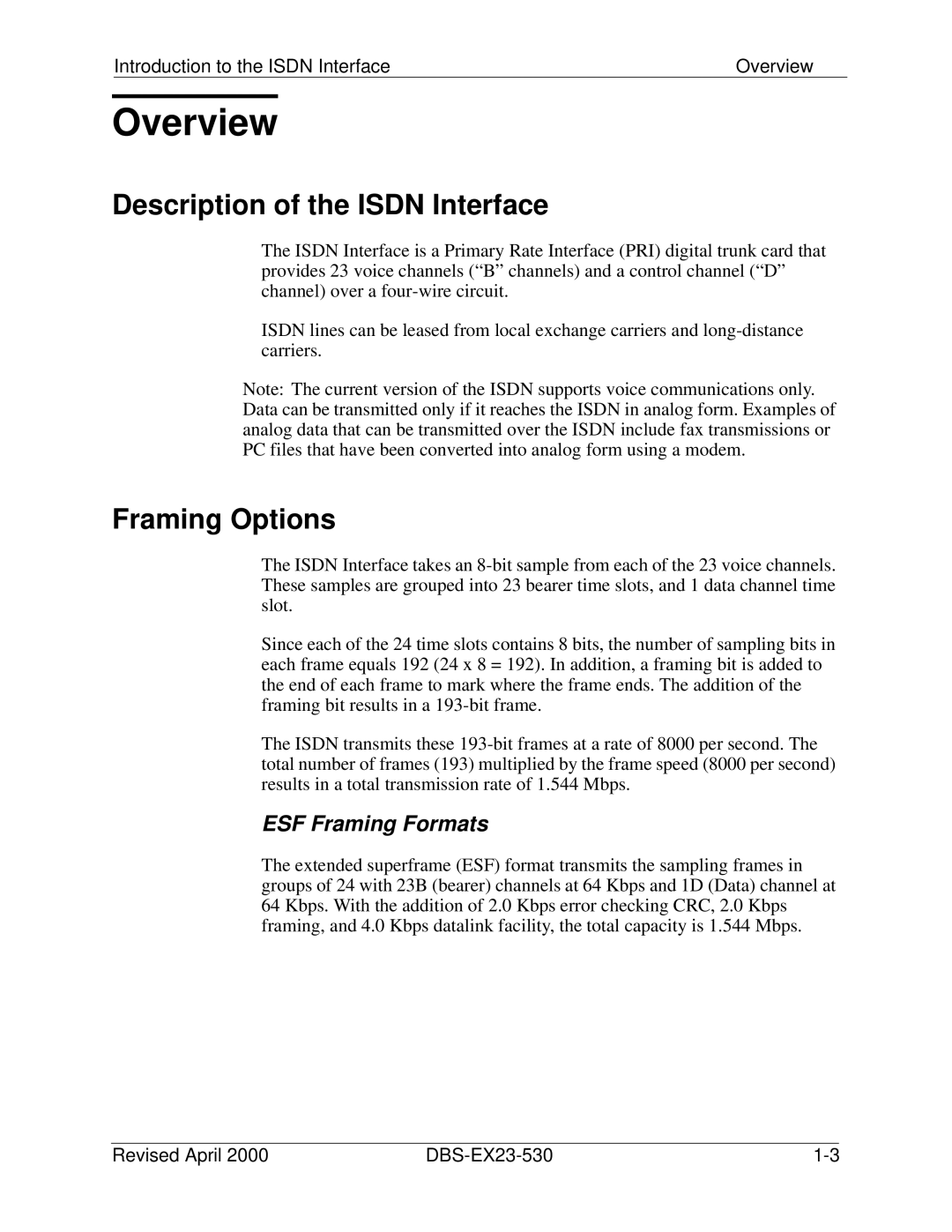Introduction to the ISDN Interface | Overview |
Overview
Description of the ISDN Interface
The ISDN Interface is a Primary Rate Interface (PRI) digital trunk card that provides 23 voice channels (“B” channels) and a control channel (“D” channel) over a
ISDN lines can be leased from local exchange carriers and
Note: The current version of the ISDN supports voice communications only. Data can be transmitted only if it reaches the ISDN in analog form. Examples of analog data that can be transmitted over the ISDN include fax transmissions or PC files that have been converted into analog form using a modem.
Framing Options
The ISDN Interface takes an
Since each of the 24 time slots contains 8 bits, the number of sampling bits in each frame equals 192 (24 x 8 = 192). In addition, a framing bit is added to the end of each frame to mark where the frame ends. The addition of the framing bit results in a
The ISDN transmits these
ESF Framing Formats
The extended superframe (ESF) format transmits the sampling frames in groups of 24 with 23B (bearer) channels at 64 Kbps and 1D (Data) channel at 64 Kbps. With the addition of 2.0 Kbps error checking CRC, 2.0 Kbps framing, and 4.0 Kbps datalink facility, the total capacity is 1.544 Mbps.
Revised April 2000 |
